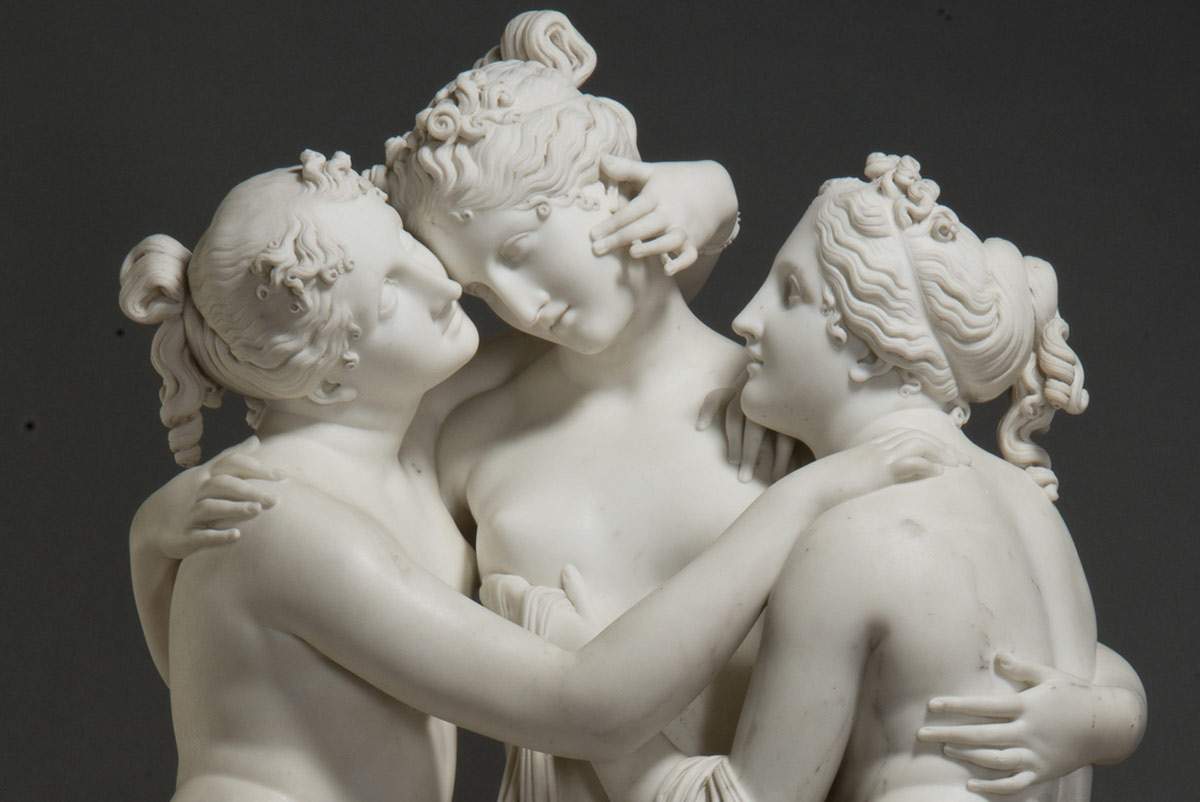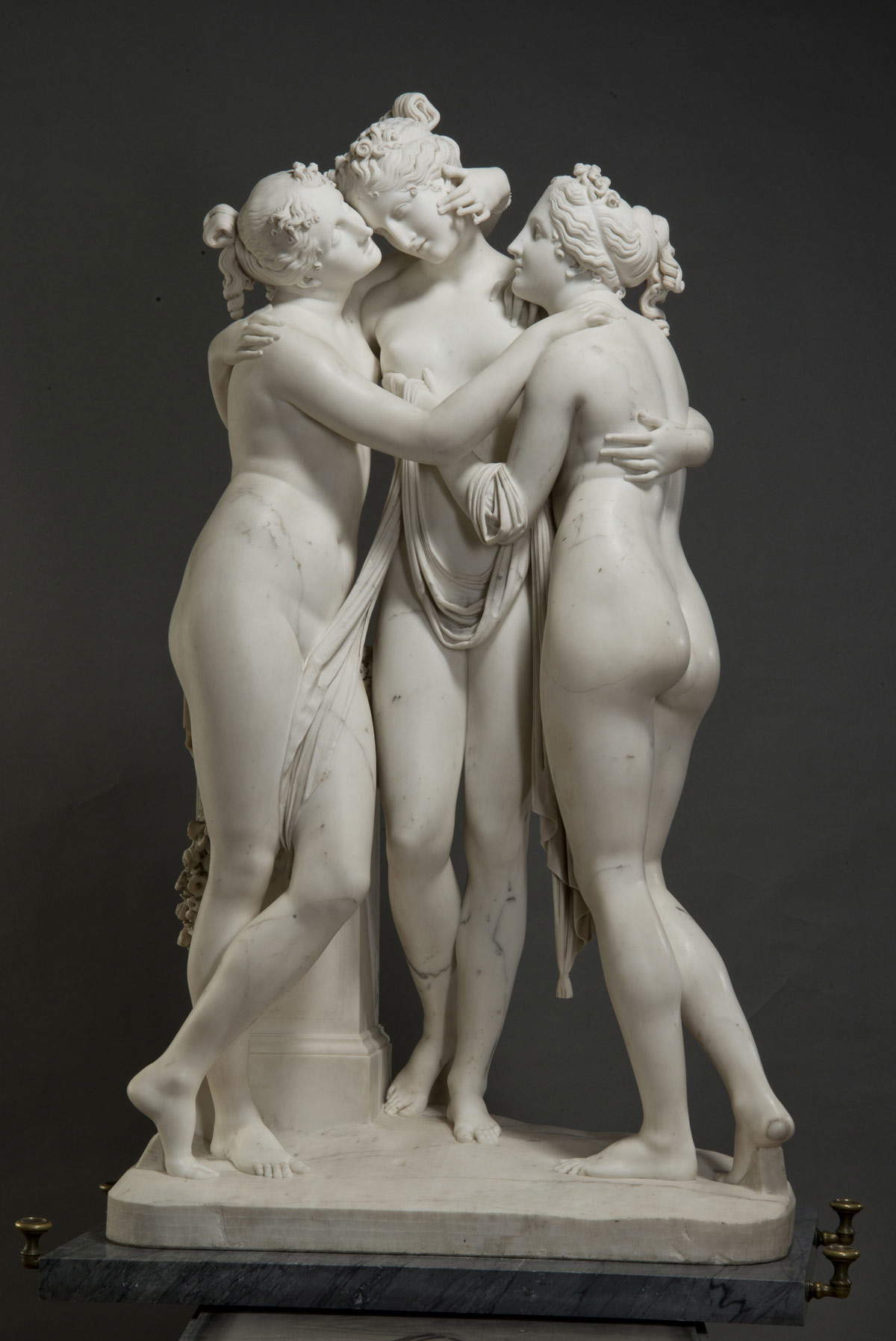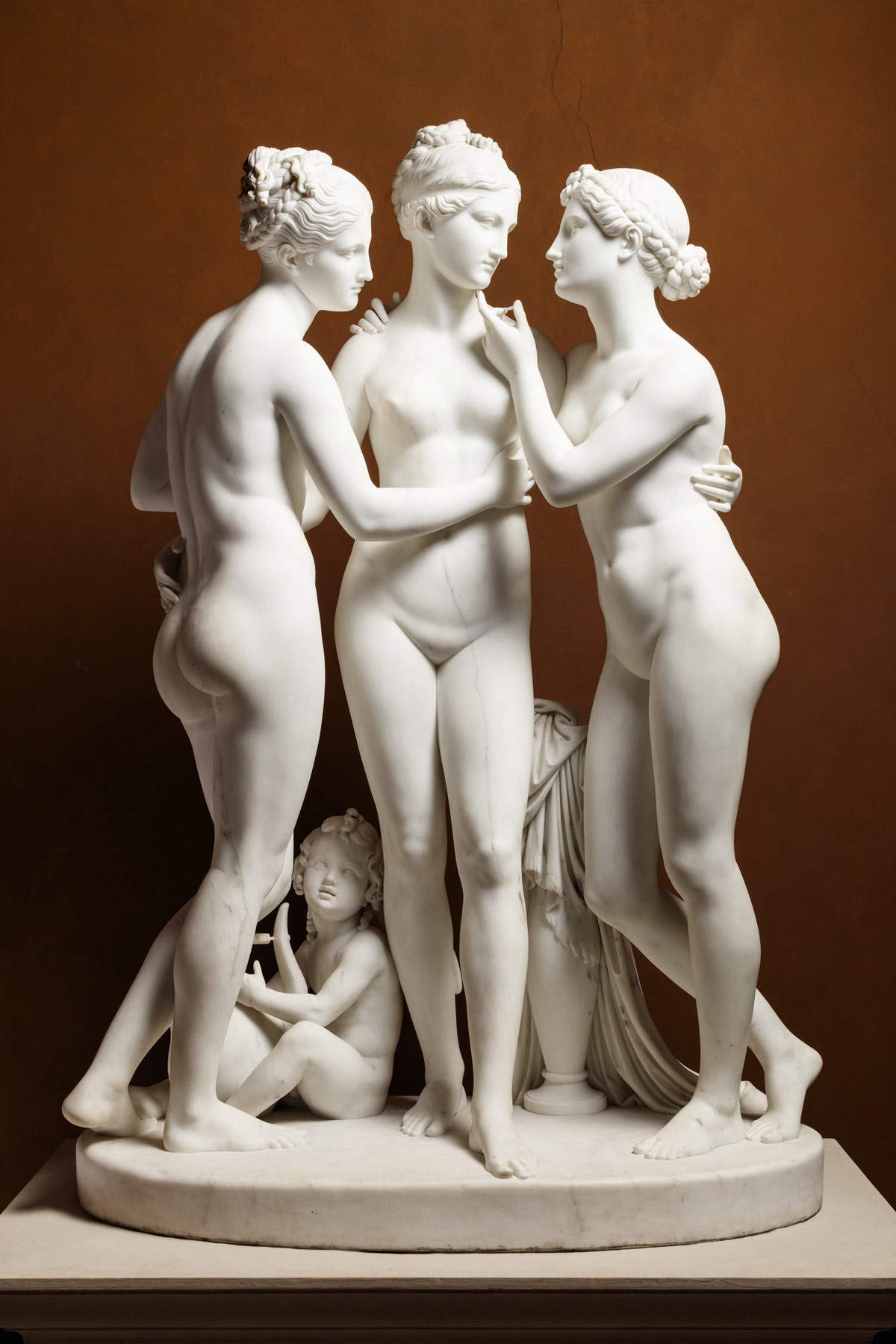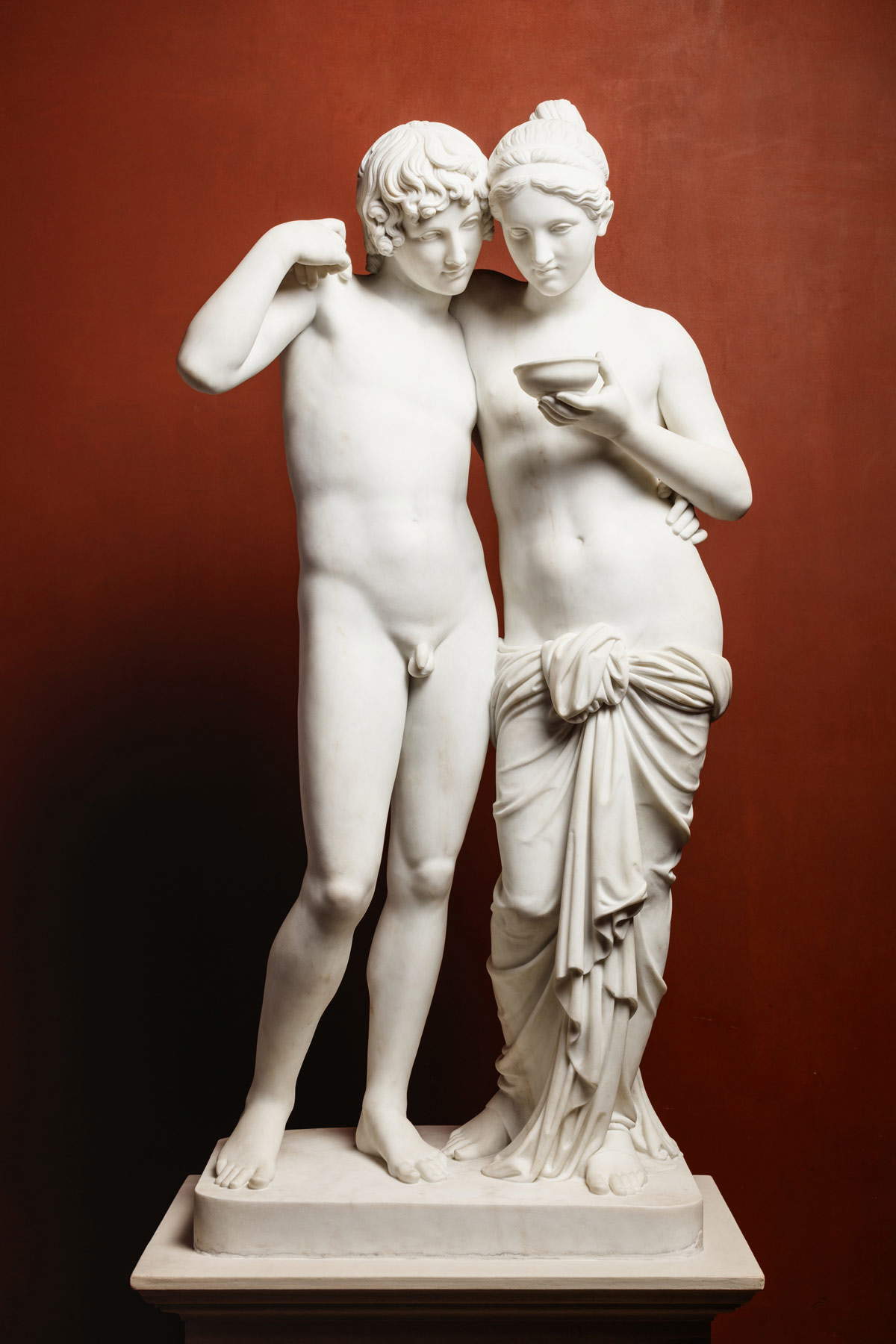by Redazione , published on 25/09/2019
Categories: Exhibitions
/ Disclaimer
From October 25, 2019 to March 15, 2020, the Gallerie d'Italia in Milan's Piazza Scala will host the exhibition 'Canova | Thorvaldsen. The Birth of Modern Sculpture'
From October 25, 2019 to March 15, 2020, the Gallerie d’Italia in Piazza Scala in Milan will host an exhibition dedicated to Antonio Canova (Possagno, 1757 - Venice, 1822) and his rival Bertel Thorvaldsen (Copenhagen, 1770 - 1844), entitled Canova | Thorvaldsen. The Birth of Modern Sculpture, curated by Stefano Grandesso (author of the most comprehensive monograph on Thorvaldsen) and Fernando Mazzocca (a great scholar of neoclassical art). The exhibition, produced in collaboration with the Thorvaldsen Museum in Copenhagen, the State Hermitage Museum in St. Petersburg, is made possible thanks to the contribution of key loans from Italian and foreign museums and private collections, including the Biblioteca Apostolica Vaticana, the Gallerie degli Uffizi in Florence, the J. Paul Getty Museum in Los Angeles, the Museo Nacional del Prado in Madrid, the Pinacoteca di Brera and the Pinacoteca della Veneranda Biblioteca Ambrosiana in Milan, the Metropolitan Museum in New York, the Gallerie Nazionali di Arte Antica in Rome, and the Gallerie dell’Accademia in Venice. A substantial nucleus of works also comes from the Museo e Gypsotheca Antonio Canova in Possagno, which is planning major initiatives for the celebrations of the 200th anniversary of the master’s death.
The aim of the exhibition is to enact a comparison never before attempted in an exhibition occasion, that between the two great protagonists of sculpture at the time, namely the Italian Canova and the Dane Thorvaldsen, the two “modern classics” who transformed the very idea of sculpture and its technique. The city of Rome was the terrain on which the two illustrious masters faced each other: here, both of them carried out a good part of their careers (Canova arrived in Rome in 1781 and died there in 1822, while Thorvaldsen settled there from 1797 for the next forty years). Also in Rome, the two artists engaged in one of the best-known and most productive challenges on identical themes and subjects that would give art a number of masterpieces: figures from classical mythology, such as Cupid and Psyche, Venus, Paris, Hebe, and the Graces, represented in the common imagination the embodiment of the great universal themes of life, such as the brief journey of youth, the enchantment of beauty, and the flattery and disappointments of love.
The acclaim with which they were both greeted by contemporary critics is emblematic of a civilization that looked to the ancient, but at the same time aspired to modernity, a duality they masterfully interpreted and guided: Canova had been the revolutionary artist, capable of granting sculpture primacy over the other arts, in the name of confronting and surpassing the ancient; Thorvaldsen, looking at his rival’s work and strategy, had been inspired by a more severe and austere idea of classicism, initiating a new season of Nordic art, inspired by Mediterranean civilizations. Both Canova and Thorvaldsen had been able to emancipate themselves from the constraint that patrons traditionally placed on sculpture because of the high cost of marble or bronze, founding large studios that were the size of complex workshops, with numerous collaborators and pupils: with the technical innovations introduced by Canova and used on a large scale by Thorvaldsen (creation of a plaster model before the marble statue) the sculptor in fact acquired for the first time the freedom to express in the statue, conceived without commission, his own poetics.
The Milan exhibition brings to the Gallerie d’Italia more than 150 works divided into seventeen sections to document the extraordinary complexity of Canova’s and Thorvaldsen’s creations, destined for high-profile collectors both Italian and international, and the enormous following that their sculpture had, offering continuous comparisons with other artists of all nationalities. Among the masterpieces featured are also Canova’s Three Graces and Thorvaldsen’s: they will be exhibited together for a comparison that has never been seen live before. On the celebrated theme of Cupid and Psyche, Canova’s Cupidand Psyche standing together with Thorvaldsen’s Psyche with a Vase will also arrive, and again there will be Canova’s Hebe (in the Hermitage version) and that of the Danish sculptor.
The exhibition opens daily (except Mondays, closing day), from 9:30 a.m. to 7:30 p.m. (Thursdays until 10:30 p.m.). Tickets: full 10 euros, reduced 8 euros, special reduced 5 euros. As part of the #canovaamilano project for the two exhibitions Canova | Thorvaldsen. The Birth of Modern Sculptureat the Gallerie d’Italia andCanova. I volti ideali alla Galleria d’Arte Modena (GAM), there is a reciprocal reduction: the entrance ticket for the first exhibition visited entitles the visitor to reduced admission to the second exhibition. Free for convention members, schools, children under 18 and every first Sunday of the month. For info, call toll-free 800 167619, or email info@gallerieditalia.com or visit www.gallerieditalia.com. Below are images of some of the works in the exhibition.
 |
| Antonio Canova, The Three Graces (1812-1816; marble, 182 x 103 x 46 cm; St. Petersburg, State Hermitage Museum). Ph. Credit © The State Hermitage Museum, 2019 |
 |
| Bertel Thorvaldsen, The Graces with Cupid (1817-1819; marble, 172.7 x 119.5 x 65.3 cm; Copenhagen, Thorvaldsens Museum) |
 |
| Antonio Canova, Cupid and Psyche standing (1800-1803; marble, 150 x 49.5 x 60 cm; St. Petersburg, State Hermitage Museum). Ph. Credit © The State Hermitage Museum, 2019 |
 |
| Bertel Thorvaldsen, Cupid and Psyche (1861, executed by Georg Christian Freund under the supervision of Herman Wilhelm Bissen from the original plaster; marble, 135 x 66.6 x 42.7 cm; Copenhagen, Thorvaldsens Museum) |
 |
| Antonio Canova, Hebe (1800-1805; marble, 161 x 49 x 53.5 cm; St. Petersburg, State Hermitage Museum). Ph. Credit © The State Hermitage Museum, 2019 |
 |
| Bertel Thorvaldsen, Hebe (1819-1823; marble, 156.5 x 51.2 x 59.5 cm; Copenhagen, Thorvaldsens Museum) |
 |
| Milan, a major exhibition at Gallerie d'Italia for the unprecedented Canova-Thorvaldsen comparison of their masterpieces |
Warning: the translation into English of the original Italian article was created using automatic tools.
We undertake to review all articles, but we do not guarantee the total absence of inaccuracies in the translation due to the program. You can
find the original by clicking on the ITA button. If you find any mistake,please contact us.






